Mexican Chile Relleno: Recipes, Secrets, and Variations
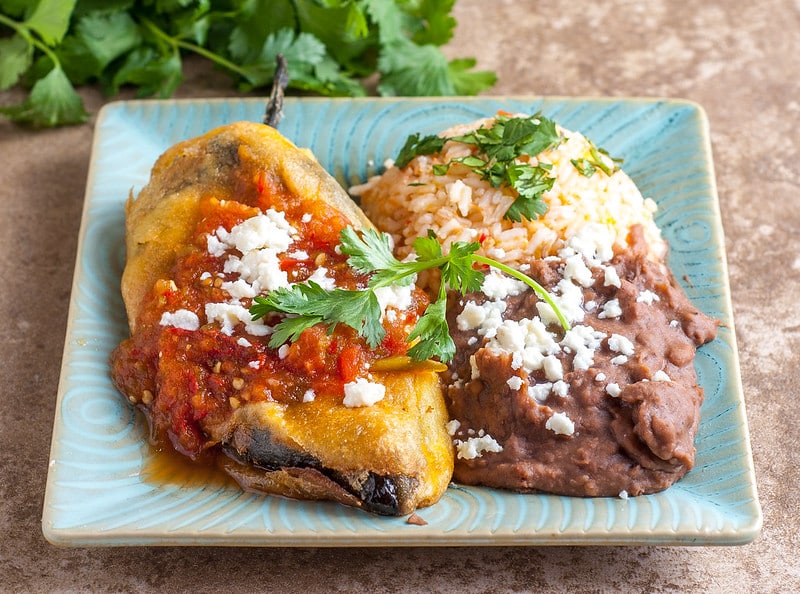
The Chile Relleno is one of Mexico’s most emblematic and popular dishes, which has gained international renown.
In today’s post, I will review its history, popular recipes (my grandma’s), and the existing types.
In a nutshell, chile relleno is a typical Mexican dish made from whole chile poblano, roasted directly over fire or on a griddle or comal, then stuffed with various ingredients, usually meat, and wrapped in a layer of battered eggs and fried.
But before I go on, let’s see what the “chile poblano” is all about (the main ingredient).
The Poblano Pepper for Chile Relleno
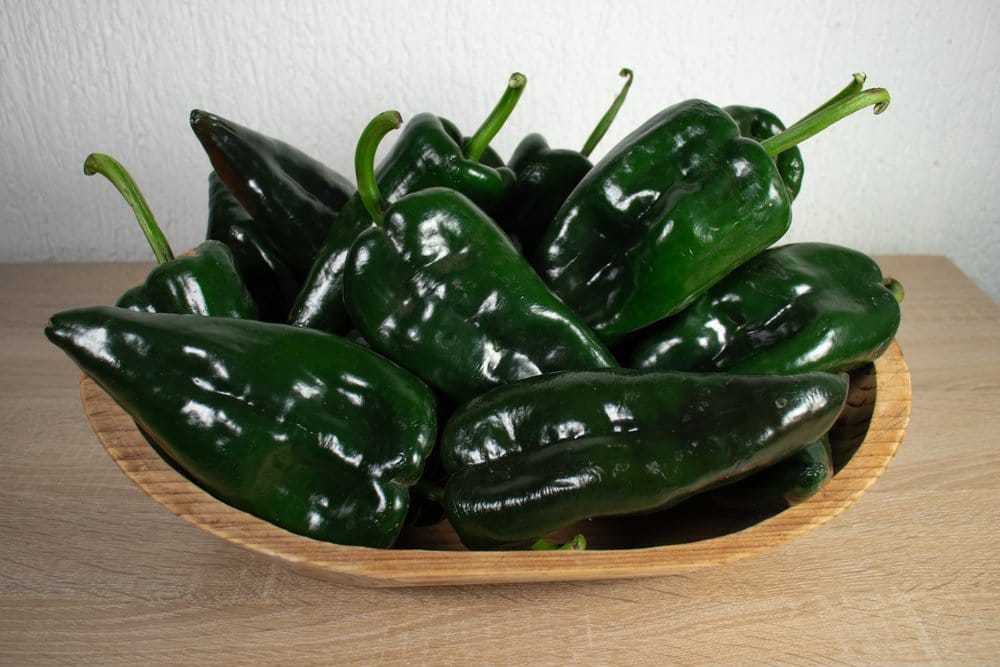
This chili is grown in most of Mexico and is an important ingredient in many regional recipes.
It goes by different names depending on the area: chile jaral, chile joto, chile Esmeralda, chile miahuateco, chile gordo, and chile para rellenar.
It has an intense dark green shiny color and a fleshy and elongated shape.
It has a lot of flavors and is slightly spicy. This pepper is usually roasted regardless of the dish.
It can be roasted in the oven, on a griddle pan, comal or directly on the stove.
It is customary to cover it with transparent paper or put it in a ziplock bag for a few minutes so that it “sweats” and thus you can easily remove skin, veins, and seeds.
Poblano chili peppers can be added to sauces, soups, salads, tacos, or stuffed with different foods.
Many people like to eat them in strips by adding cream on top (known as Rajas Poblanas).
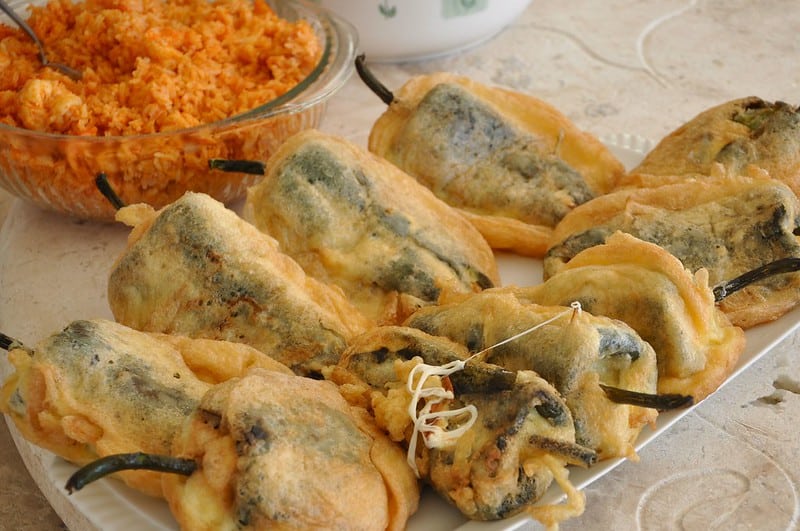
It can also be added to meat stews, mixed with cream or milk, cilantro, chopped or ground garlic, and a pinch of salt to make a poblano sauce.
When making chile relleno, thick and long chiles should be used.
This is because the people from the state of Puebla love it and have popularized it stuffed with cheese and picadillo (ground beef), coated with tomato sauce.
In coastal areas, the stuffing changes. They usually add shrimp, tuna, chicken, seasonings, and local spices.
Other Important Mexican Chili Peppers
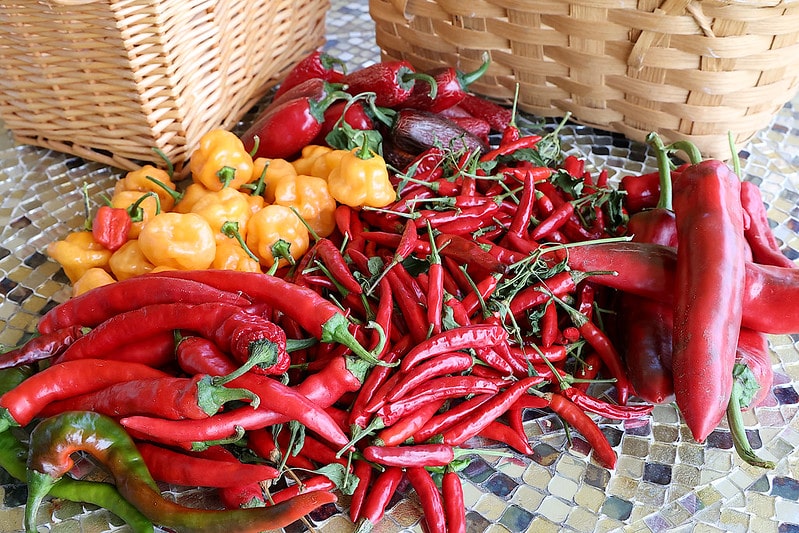
There are six types of chiles most commonly used in Mexican gastronomy. Let’s take a brief look at each one of them:
- Habanero chile: It has a soft texture. When ripe, it is orange-reddish. It is consumed raw, roasted, or cooked – very spicy and is mostly used to make habanero sauce. The little chiltepin is a good alternative to this chili if you like super spicy peppers.
- Jalapeño pepper: This one adds the desired spiciness to guacamole. It has a dark green color and a firm texture. It is so-called because it comes from the area of Jalapa where it used to be grown. Sometimes it is also called cuaresmeño chile. It can be eaten raw, pickled, or dried (then called chipotle).
- Pasilla chile: It has a black color and a moderate-high level of spiciness. It is usually added to sauces, soups, and stews. It is sold whole or in powder and comes from crops in the states of Nayarit, Michoacán, and Jalisco.
- Poblano or ancho chile: It has shiny skin with a dark green color and large size. It is the most recommended for stuffing. A well-known example of the use of this chile is the famous dish chile en nogada. It can also be cut into strips and used to prepare “rajas with cream and cheese.” When dried, it becomes the ancho chile. Also used in the appetizing mole poblano.
- Guajillo chile: is brown to reddish (normally used and sold dry). It combines very well with stews, sauces, and even mole and can also be used in marinades. A basic ingredient in many Mexican recipes. It has three variants depending on the level of spiciness: guajillo chico, ancho, and puya.
- Serrano chili: It is small in size and eaten green (when it isn’t ripe), but also when it takes on a reddish color. It is used cooked, roasted, fried, or simply raw. It is cultivated in the highlands of Puebla, Sonora, and Veracruz. This is the leading chili for salsa verde.
Chile Relleno History
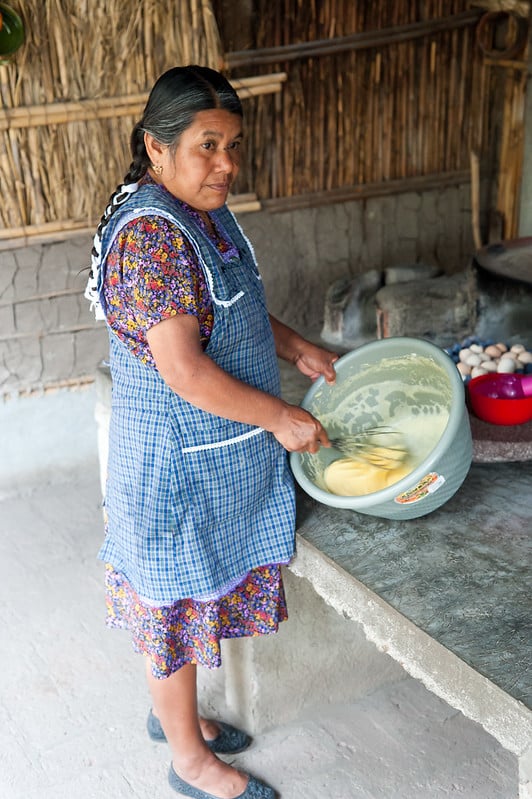
It should be noted that behind this nutritious and appetizing dish, there is a history that is already part of the culinary culture of Mexico.
Let’s review the historical trajectory of chiles rellenos...
The origin of this renowned and appreciated dish dates back to the 16th century when the Spanish conquistadors arrived in the country.
At that time, not only did the indigenous and Spanish populations interbreed, but also the customs and culinary traditions of both cultures.
Fusion of indigenous and Spanish cultures
One of the dishes that represents to a great extent this mestizaje is the chile relleno, which was based, and still is, on a roasted poblano chile stuffed with meat or cheese covered with egg batter and then fried.
In this dish, indigenous and European ingredients were fused since the native vegetable was mixed with a stuffing of cheese, sardines, or minced pork, to which seasonings, nuts, and raisins were added.
According to historians, there is a legend that says that Agustín de Iturbide, the monarch who commanded the Spanish army in Mexico in the battle that marked the final defeat of Spain, wanted to celebrate in Puebla the day of Saint Augustine, his patron saint. This was on August 28, 1821.
The event was held at the local convent of the nuns of Santa Monica in Puebla, to celebrate both Mexico’s recent Independence and Emperor Iturbide’s saint.
The emperor was on his way back from Veracruz to Mexico City after having signed the independence of Mexico from Spain with the Treaty of Cordoba.
Chiles en Nogada
The nuns made a special variety of chile relleno for the occasion called chile en nogada, in which they mixed poblano chile with walnut cream sauce, from which the term nogada derives from the walnut tree.
On top, they sprinkled red pomegranate seeds and green parsley, recreating the Mexican flag’s red, white, and green colors.
By virtue of this act, this dish is considered the most patriotic in Mexico.
As evidence of this event, historian José Luis Juárez López published in an article in the magazine Correo del Maestro, in its September 2005 edition, that even though there is documentation of chiles rellenos preparation for hundreds of years in Mexico, chiles en nogada were only referenced in Mexican culinary writings decades after the legendary stay of the monarch Iturbide in Puebla.
Even in 1849, there was no reference to this dish, as evidenced in a “Cook’s Manual” published in that year, in which all the Mexican specialties at that time were collected, and there is no mention of chiles en nogada.
Still, it did talk about a recipe for chicken in nogada sauce.
It was not until 1858 when the book “Nuevo Cocinero Mexicano en Forma de Diccionario” was published, in which appeared, according to Juarez Lopez, the first culinary reference to a recipe for chiles rellenos covered in nogada sauce.
This recipe was used to prepare a poblano chile stuffed with pork covered with walnut sauce and pomegranate seeds, although Juarez Lopez notes that the seeds were optional to the consumer’s taste.
By the 1920s, chiles en nogada was widely recognized as a must-have recipe in every Mexican cookbook.
Chile Relleno: Traditional Recipe
Here are the instructions to make traditional chile relleno (the video is to give you an idea):
Ingredients (5 portions):
- 5 Poblano peppers
- Panela cheese, 1/2 kg
- 4 tomatoes
- Onion, 1/2 kg
- Chicken bouillon, 1 cube
If you want to make the chiles “capeados” (coated), the following ingredients should be added:
- Eggs, 4
- Flour, 1 cup
- Oil, ½ liter
To prepare this dish, the following steps must be followed:
- Roast the chiles on the comal or frying pan
- Place the chiles in a plastic bag for two or three minutes (so they can “sweat”)
- Remove the thin skin, veins, and seeds
- Once the chiles are ready, stuff them with panela cheese, the amount to your liking
- Place oil in a medium saucepan or casserole
- Add the onion
- Fry over low heat until transparent
- Blend tomatoes with the garlic and the chicken bouillon cube. Add a little more onion if desired
- Add the blended mixture to the pot where the onion is
- Check if it is well salted
- Let it boil for about 10 minutes or until it thickens a little
- Place the chiles in the pot with the tomato broth
- Let it boil for two or three minutes covering the pot or casserole
Chile Relleno: Stuffing Variations
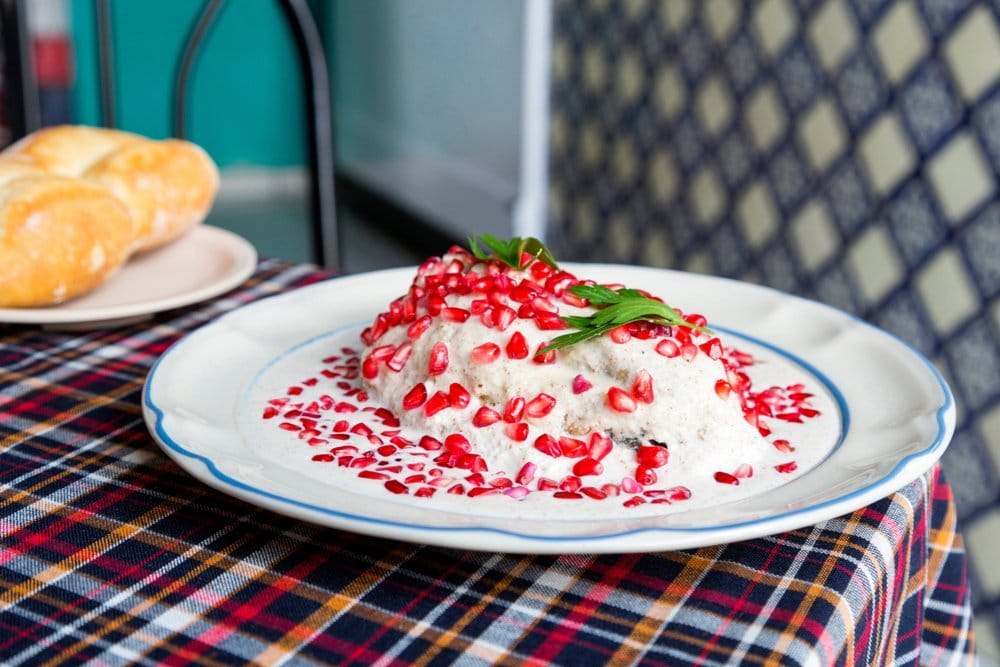
Chiles en Nogada
This is the best-known recipe among these types of chiles rellenos.
As I said earlier, this is a particular variety of chile relleno and is named after the creamy covering walnut sauce, hence the name “nogada.”
The filling requires shredded or chopped pork covered with a creamy apple sauce, almonds or walnuts, chopped tomatoes, raisins, cinnamon, and cloves, among other ingredients.
It is usually served with rice and black beans. Even though some people prefer corn tortillas as if they were tacos (not my style).
This dish acquired a very special meaning since it emerged on the day of the signing of Mexican independence.
That is why it has become an important reference for Mexican cultural identity due to its historical relationship with the end of Spanish rule over Mexico.
It can be eaten at any time of the year. Still, because of its historical connection with St. Augustine’s Day and the national date of September 15, it is most often prepared at the end of August and the beginning of September.
Ingredients (6 portions)
- 6 Large poblano peppers
- Fine herbs
- Ground beef, 300 gms
- 2 skinned roasted tomatoes
- 1/2 onion
- 2 garlic cloves
- 1 Fried plantain (diced)
- 1/2 cup peeled almonds
- 1 Apple (peeled and chopped)
- 1 peach (peeled and chopped)
- 1/2 cup raisins
- 100 gms corn starch
- 50 gms pine nuts
- Chopped walnuts, 100 gms
- Sugar
- Oil
- Salt and pepper
For the nogada cream sauce:
- 200 gms Walnuts
- Sour cream, 1/2 lt
- 190 gms cream cheese
- White wine, a splash
- Goat cheese, 2 tablespoons
- Evaporated milk, 1/2 cup
- 1/2 teaspoon cinnamon powder
- Sugar
- Salt
Decoration:
- Pomegranate seeds
- Parsley leaves
Preparation:
- Roast the chiles
- Place them in a plastic bag to sweat. Then peel and devein them carefully
- Grind the tomatoes
- Fry with the onion, almonds, garlic, cornstarch, raisins, pine nuts, walnuts, and diced fruit
- Add the ground beef, sugar, salt, and pepper
- Cook over medium heat
Serving:
- Stuff the chiles
- Place one on each plate
- Coat them with the nogada sauce
- Garnish with pomegranate seeds and parsley leaves
Here you have it, 2 of the main chile relleno recipes; try them both and let me know which one you like most!
Also, keep in mind that the flavor profile of the chiles en nogada is on the sweet side.
The classic cheese one is more of a neutral flavor and can be as spicy as you want.
Again, although these are the 2 most representative chiles rellenos, you will find many other variations throughout Mexico. For example, in coastal towns, seafood is used for stuffing.
At the end of the day, you can make your own recipe and experiment with other stuffings.
But don’t forget to share those with us in the comments below!

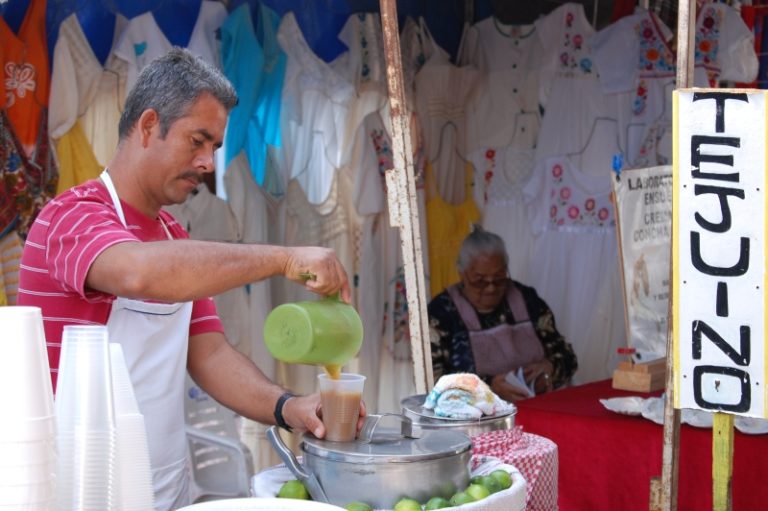
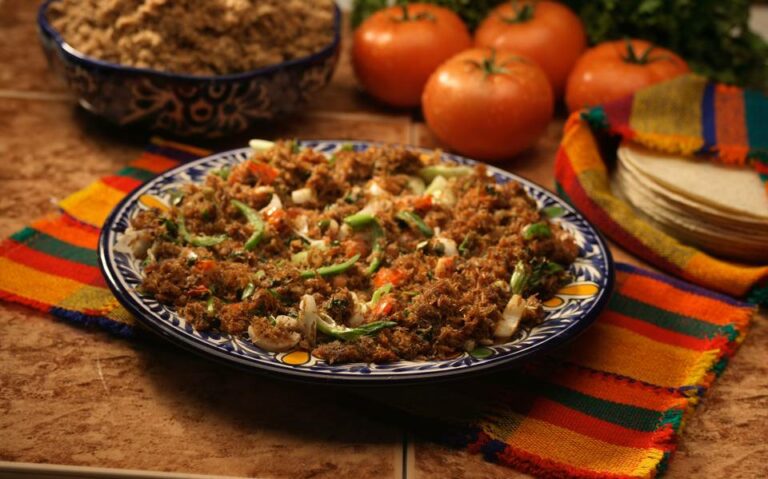
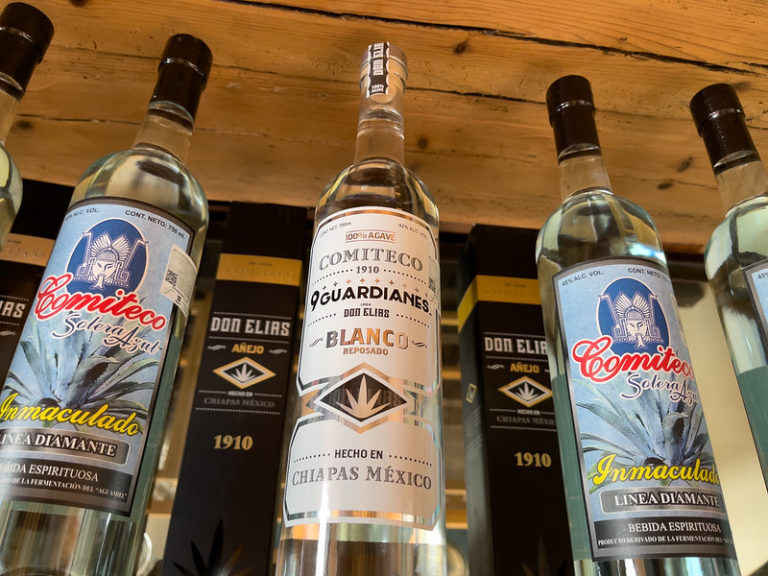


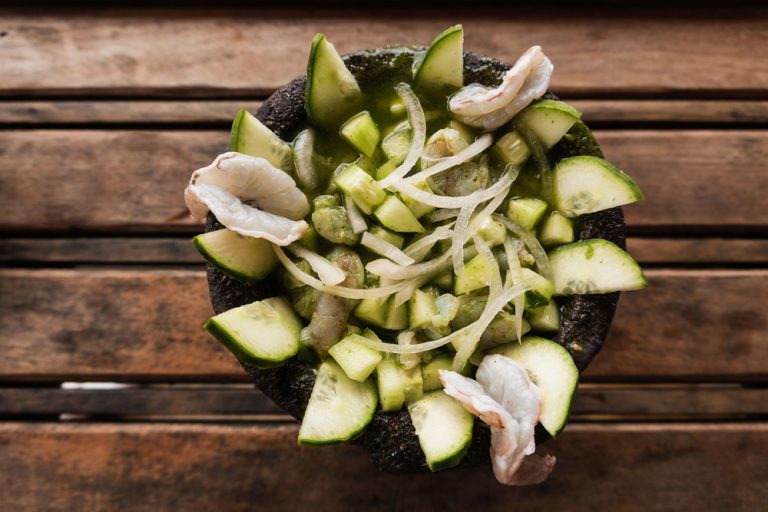
6 Comments